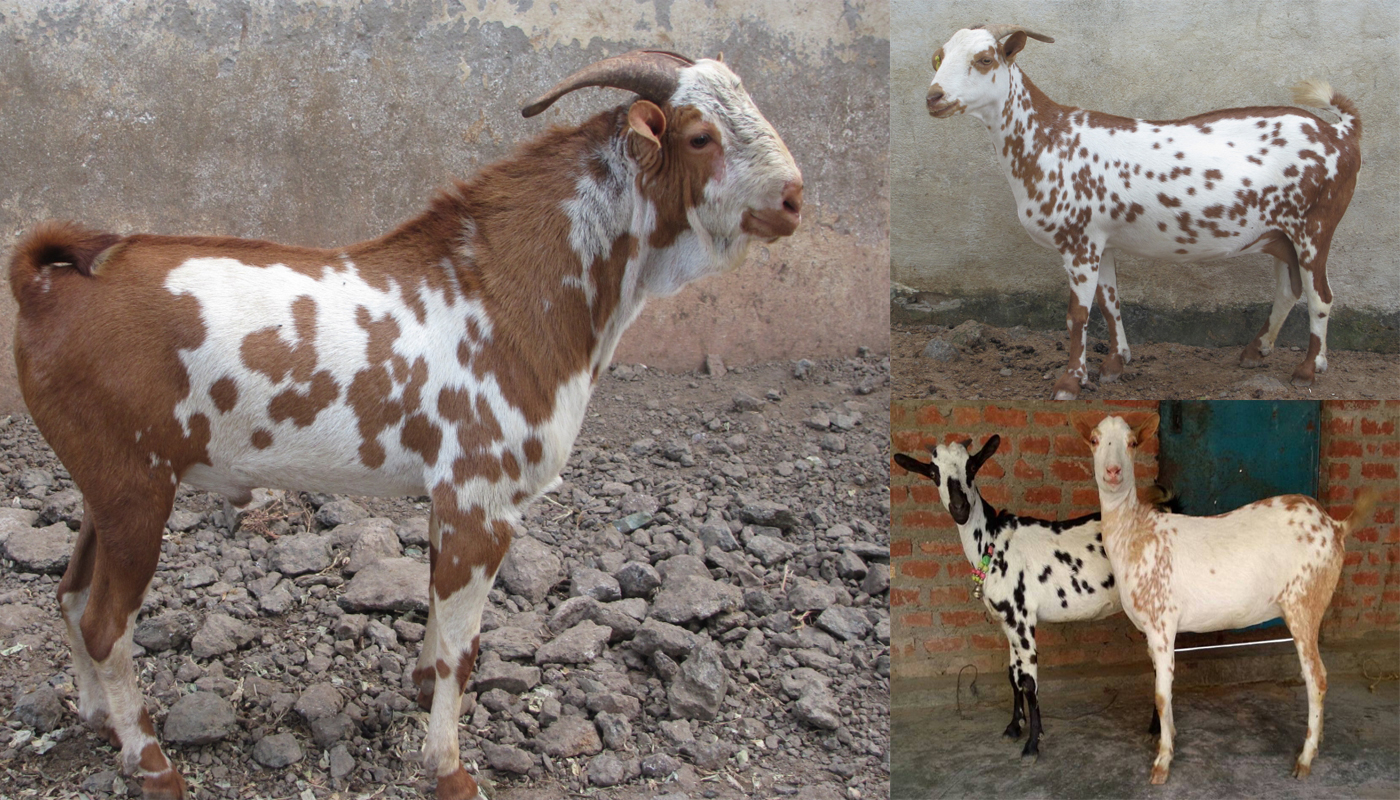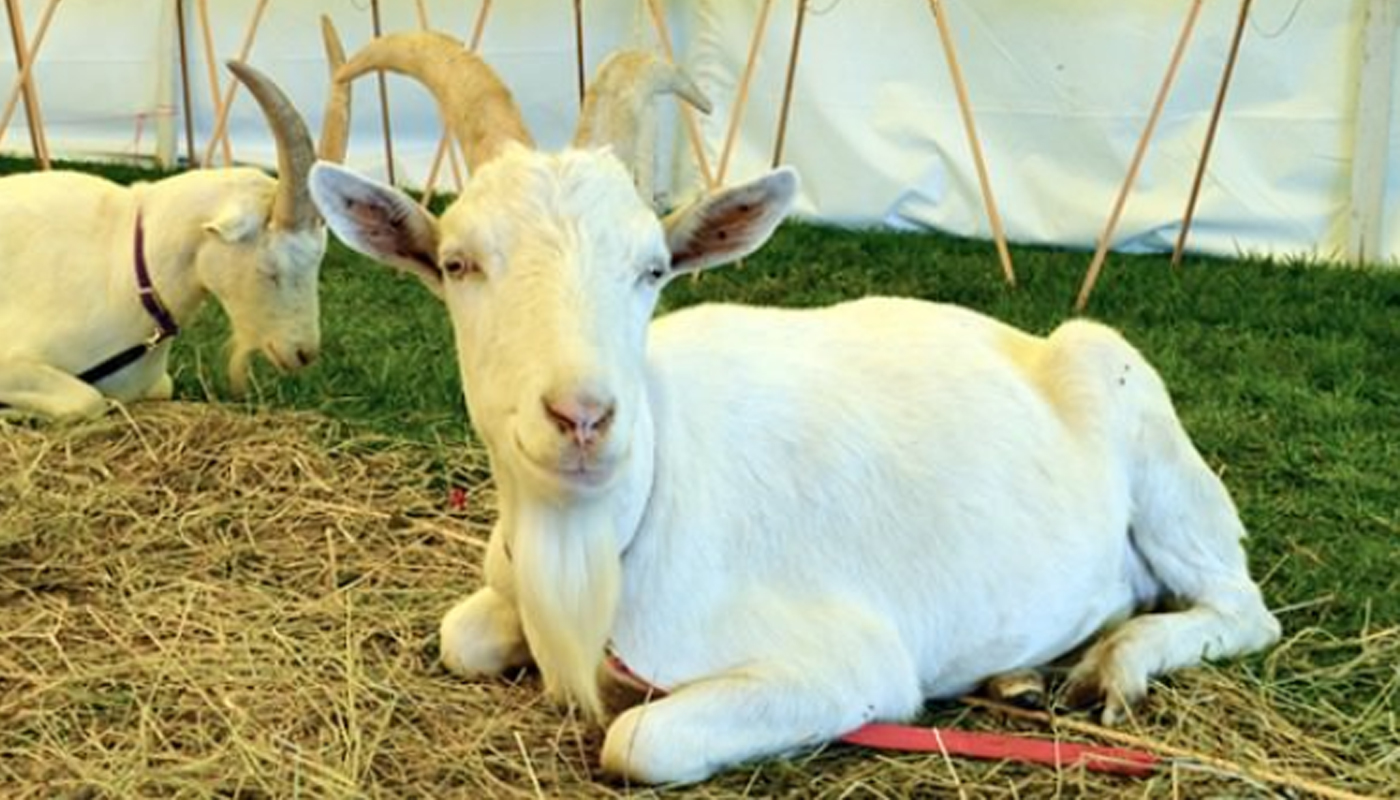
The Lamancha or American Lamancha goat is probably the most distinctive looking goat of all the goat breeds. They usually have wattles and they do not have long ears but rather very short ears.
Not only are they a very distinct looking goat but they become really attached to their humans and can produce a lot more milk per year than most other goat breeds.
For a first-time goat owner looking for a dependable goat that is co-operative, loveable and can produce high butterfat content milk. The LaMancha is the goat to look into getting.
American Lamancha goat Quick Profile Overview
| These unique looking American goats are excellent milk producing goat that are sure to liven up any farm or homestead | |
| Country of Origin: | United States of America |
| Other Names: | Lamancha |
| Breed Size: | Large |
| You may Also Like: | Top 12 Large to Largest Goat Breeds |
| Main Purpose: | Milk production |
| Can be used for | Breeding, Milk, Pets, Show |
| You may Also Like: | Top 10 Best Dairy Goat Breeds |
| Temperament: | Lovable, inquisitive and cooperative |
| Good with Kids? | They are good around supervised children as they are quite large |
| You may Also Like: | 10 Best Goat Breeds to Keep as Pet |
| Ideal Environment: | They need a lot of fresh grazing pastures and space to roam about |
| Ideal Climate: | They adapt well to most weather conditions and climates |
| Conservation Status: |
Not Listed by the *ALC Common and readily available |
| Health Issues? | They do not have many known health issues as they are a really hardy goat breed |
| Good Starter Goat? | They make an excellent starter goat due to their cooperative and loveable natures |
| Goat Associations: | American LaMancha Breeders Association |
| Goat Clubs: | Please check with the American LaMancha Breeders Associations and the American Dairy Goat Association for an up to date list of Lamancha goat clubs in or around your area. |
| Note: *ALC stands for American Livestock Conservancy | |
PHYSICAL CHARACTERISTICS
| The American Lamancha goat have a very distinct look due to its very small ears. They are also large lovable characters that get really attached to their humans. They love the attention and will run to greet you lovingly. | ||
| Color(s): |
They come in many different colors my favorite is the fawn speckled color which is rather unusual. But they come in brown, grey, white, black and combinations of various splashes, mottles and specks. Both the buck and doe have the same color traits in this breed |
|
| Goat⇒ | Doe | buck |
| Breed Weight: | 130 lbs. | 165 lbs. |
| Breed Height: | 28 inches at withers | 30 inches at withers |
| Hair: | Short, fine and glossy | They have fine, short glossy coats. They can also have a ridge of hair along their backs. |
| Ears: | There are two types of ears for a Lamancha The “elf ear” – The tip of the ear points like that of an elf and it can only get up to 2 inches. The end of the ear for the “elf ear” must either turn up or down. Cartlidge may shape the ear. The “gopher ear” – Only a little or preferably no cartilage is allowed to shape the ear. Only 1 inch of an ear is allowed which can turn up or down. |
The “gopher ear” – Only a little or preferably no cartilage is allowed to shape the ear. Only 1 inch of an ear is allowed which can turn up or down. This is the only ear shape that is recognized or allowed for the buck! |
| Horns: | They do not usually have horns as they are disbudded at around 2 to 3 weeks old. But they can have horns which are short and grown back into a sort of curl. |
They are disbudded at around 2 to 3 weeks of age. But they can have horns that typically curl around their ears like a rams horns. |
| Matures at age: | 5 to 15 months | 3 to 15 months |
| Puberty Age: | 5 to 6 months | 4 to 9 months |
| Breeding Age: | 18 months | 1 year |
| Breeding Traits: | 1 Breeding cycle | Cover 20 to 30 does in 1 season |
DOE BREEDING & MILKING INFORMATION
| The doe is a lot more delicate than the buck in this breed. Her face is much smaller and more feminine as is her body. She can only be bred once a year but most only breed the does every 2 years. Creating a breeding program that allows for one doe to breed the 1 year and the other the next. This is because of the does incredible milk yield ability | |
| Breeding Period/cycle: | Usually lasts 12 to 36 hours Ave. 21 days/18 to 24 days |
| Gestation Period: | Usually around 148 to 155 day but most are 150 days |
| Kids: | They usually produce twins but can have a single kid or up to four kids in one litter. |
| Good Mothers? | They are excellent mothers as they have a very lovable nature |
| Lactation Period: | 24 months – The does can produce milk for up to 2 years without having to be refreshed. |
| Milking From: | 4 to 6 weeks after kidding |
| Milk Quality: | Excellent,They are an excellent dairy goat with about 3.9 percent butterfat content in their milk. They also have around 3.1 percent protein in their milk. |
| Milking Level: | Normal,As they were specifically bred as a dairy goat, they tend to be quite easy to learn to milk. |
| You may Also Like: | Top 10 Best Dairy Goat Breeds |
GOOD TO KNOW
| A bit more useful information about the lovely American LaMancha milk goat breed | |
| Where to buy them: | Sirocco Ridge Farm, Redwood Hill Farm , Possum Kingdom Kreamery or you can check with local dairy farmers or livestock supplier in and around your area. The various goat associations as listed on this page may also be able to help with local breeders. |
| Agility: | They do like to climb and romp around as much as other goat breeds. But they are not as agile as most. They will still try to get through anything they can that is in the way of getting to greener pastures or has piqued their curiosity. |
| Interact with other animals: | They are really sociable animals and will interact with other livestock. |
GENERAL INFORMATION:
They are an amazing breed of goat. A perfect pet that is lovable, obedient and useful in that it will give you buckets of fresh nutritious goat’s milk for the family.
They give a good leather yield but are not specifically bred for their leather production
They do have good fiber as their coats are fine and short, but they are not bred nor used for fiber production
They do have good meat quality and can produce quite a lot per carcass. But they are not usually used for their meat.
HISTORY
Short-eared goats have been recorded for centuries in history.
Their exact origins, as with the LaMancha are not known but references to similar goats go back as far as ancient Persian times.
At the 1904 Paris Trade fair, a crate labelled “La Mancha, Cordoba, Spain” arrived it contained a herd of short-eared goats. It was from this inscription that the name Lamancha goats were derived.
It was Phoebe Wilhelm, a breeder in America, that set out to create the American Lamancha. In the early 1920’s she was the proud owner of around 125 of these goats. She used these and some other breeds to try and propagate the breed. But even after years of breeding the Lamancha trait of small ears still dominate the characteristics of the breed.
The modern day American Lamancha was accepted as a breed in January of 1958 whereby there were around 200 original Lamancha goats. It was from this stock that the foundation for all Lamancha breed as we know it in America today has grown.
They are now a very popular dairy goat breed across America.
VIDEO
USEFUL LINKS
- American Goat Society(AGS)
- American Goat Federation (AGF)
- American Dairy Goat Association (ADGA)
- American Cashmere Goat Association (ACGA)
- Canadian Meat Goat Association (CMGA)
- Canadian Goat Society (CGS)
- Animal Shelter (ASPCA)
- American Veterinary Medical Association
- American Poultry Association
- American Animal Welfare Society
- American Animal Control
- American Animal Husbandry Society
References
- https://en.wikipedia.org/wiki/American_Lamancha_goat
- http://afs.okstate.edu/breeds/goats/lamancha/index.html//#content
- https://articles.extension.org/pages/19274/goat-breeds-lamancha
- https://www.roysfarm.com/lamancha-goats/
 Jonica Goat Breed – Everything You Need to Know
Jonica Goat Breed – Everything You Need to Know 10 Goat Breeds that have Long Hair
10 Goat Breeds that have Long Hair Black Bengal Goat Breed – Everything You Need to Know
Black Bengal Goat Breed – Everything You Need to Know Valais Blackneck Goat Breed – Everything You Need to Know
Valais Blackneck Goat Breed – Everything You Need to Know Sahelian Goat Breed – Everything You Need to Know
Sahelian Goat Breed – Everything You Need to Know Girgentana Goat Breed – Everything You Need to Know
Girgentana Goat Breed – Everything You Need to Know Golden Guernsey Goat Breed – Everything You Need to Know
Golden Guernsey Goat Breed – Everything You Need to Know Nigerian Dwarf Goat Breed – Everything You Need to Know
Nigerian Dwarf Goat Breed – Everything You Need to Know Barbari Goat Breed – Everything You Need to Know
Barbari Goat Breed – Everything You Need to Know Kaghani Goat Breed – Everything You Need to Know
Kaghani Goat Breed – Everything You Need to Know A Beginner’s Guide to Choosing the Right Goat Breed for Your Farm
A Beginner’s Guide to Choosing the Right Goat Breed for Your Farm Saanen Goat Breed – Everything You Need to Know
Saanen Goat Breed – Everything You Need to Know